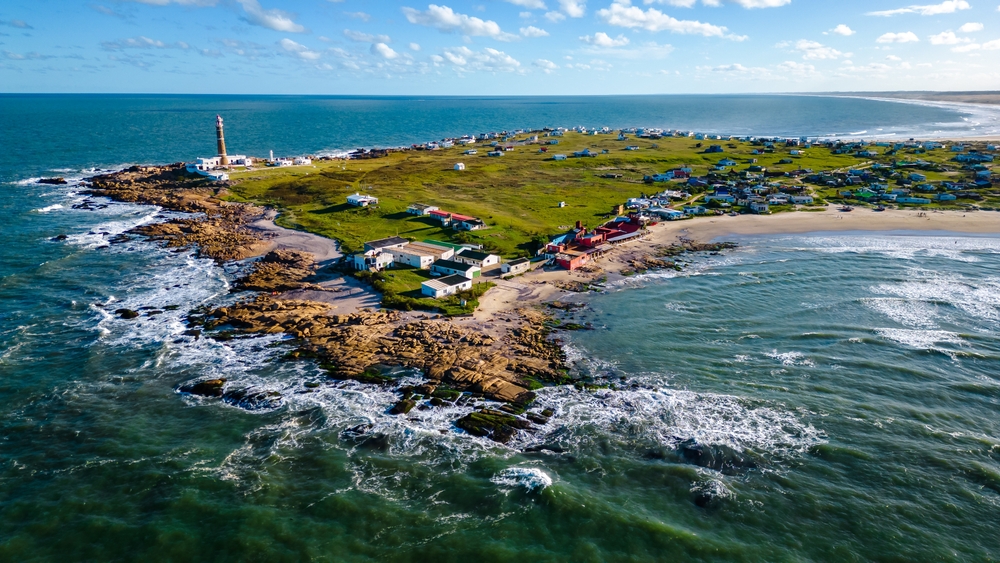Cabo Polonio Overview
Cabo Polonio National Park, or Parque Nacional Cabo Polonio in Spanish, is a remote and ecologically rich protected area located in Uruguay, covering approximately 67 square miles (174 square kilometers) along the Atlantic coast in the Rocha Department.
This national park is known for its rugged beauty, shifting sand dunes, rocky coastlines, and vast stretches of untouched beaches. The landscape is shaped by powerful winds and ocean currents, creating a dynamic environment of rolling dunes that move with time.
The park’s coastline is marked by jagged rock formations and cliffs, particularly around the Cabo Polonio Lighthouse, which stands as a landmark in the park. Inland, the terrain transitions into grasslands and coastal forests, with native vegetation including hardy shrubs and small trees adapted to the harsh coastal conditions.
The park is home to one of the largest colonies of South American sea lions, which can be seen lounging on the rocky shores or diving into the Atlantic waters. These marine mammals are one of the most popular wildlife attractions in the park. Other notable mammals found in the area include the elusive pampas fox and the capybara, the world’s largest rodent.
Bird enthusiasts can spot a variety of coastal and migratory birds, such as the black-necked swan, kelp gull, and several species of terns and plovers. The park’s diverse ecosystems support a range of birdlife, making it an important site for birdwatching in Uruguay. Offshore, dolphins and even occasional whales can be seen, particularly during their migration seasons.
One of the defining features of Cabo Polonio National Park is its near-total isolation from modern infrastructure. There are no paved roads leading into the park, and access is primarily through special off-road vehicles that traverse the sandy terrain or by hiking along designated trails.
This remoteness adds to the park’s allure, attracting visitors looking for a true escape into nature. The small settlement of Cabo Polonio, located within the park, is known for its rustic charm, with colorful cabins and a bohemian atmosphere. The village operates without a formal electrical grid, relying on solar panels and generators for power, emphasizing the park’s commitment to sustainability.
Visitors can experience the park in various ways, from guided tours that explore the dunes and coastal landscapes to independent hikes along the trails leading to scenic viewpoints. Many visitors climb the Cabo Polonio Lighthouse for panoramic views of the coastline, particularly at sunrise or sunset when the landscape is bathed in golden light.
Wildlife observation is another major draw, especially for those interested in seeing the sea lion colony up close. The beaches provide excellent opportunities for relaxation, while adventurous travelers may enjoy sandboarding on the dunes or taking boat trips to explore the marine ecosystem.
Conservation efforts in Cabo Polonio National Park focus on protecting its delicate coastal environment from human impact. Strict regulations limit new development within the park, and efforts are ongoing to preserve the native flora and fauna.
Sustainable tourism initiatives encourage visitors to minimize their environmental footprint, and research programs monitor the health of the sea lion population and other wildlife. Despite its fragile ecosystem, the park remains a model of conservation success, offering a unique blend of untouched wilderness, abundant wildlife, and sustainable living practices that make it one of Uruguay’s most remarkable national parks.










































































